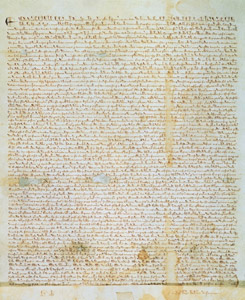Bill of Rights
Another important component of the Constitution was the Bill of Rights. The Bill of Rights consisted of the first ten amendments to the Constitution. These amendments to the Constitution were made in an effort to protect citizens' rights. Although the Federalists initially voiced reservations, they could not construct a convincing enough argument against the amendments, which were ratified between 1789 and 1791.
The Magna Carta and the English Bill of Rights

Two documents stand out as largely influencing the authors of the Constitution. Both of these documents, not surprisingly, placed limits on the role of the English monarchy. The forefathers of the United States looked back to their English heritage when they penned the United States Constitution.
The first document is the Magna Carta, Latin for “the Great Charter.” The Magna Carta was written in Latin, but it was a charter that limited the power of the monarchy in England and granted freed nobles certain rights. King John was forced to sign this document in a field at Runnymeade, England. His signature was proof that even a king was bound by law. Therefore, the Magna Carta, written and signed in 1215, marks the first time that constitutional law was recorded.
The English Bill of Rights also played a key role in the writing of the United States Constitution. Written in 1689, the English Bill of Rights guaranteed certain rights to citizens. Some of these rights are freedom of speech, freedom to bear arms, and freedom to petition the monarch. When the forefathers set out to guarantee rights and protect liberties for American citizens, the English Bill of Rights was altered to reflect the needs of the new republic. The result is the first ten amendments to the United States Constitution.